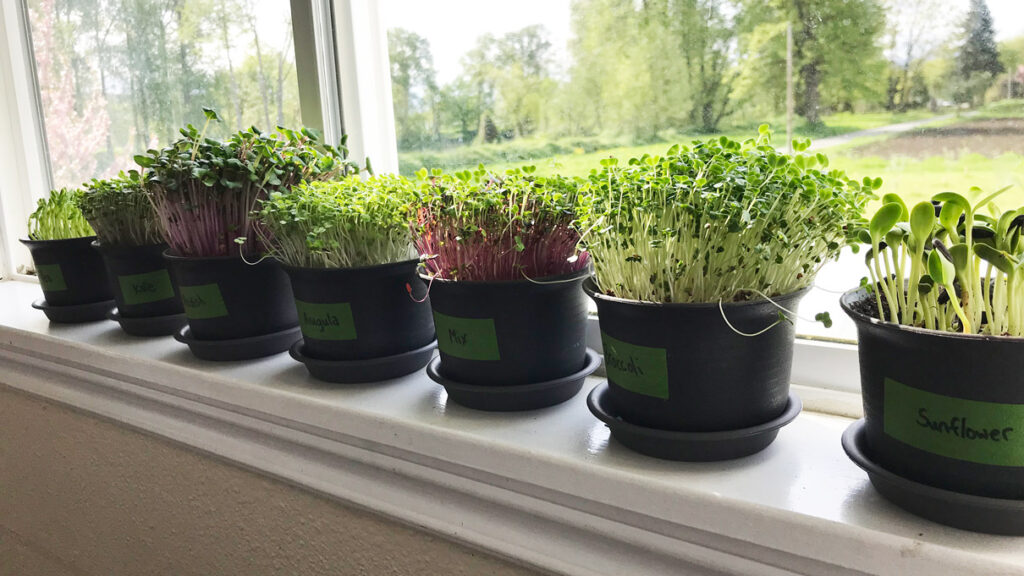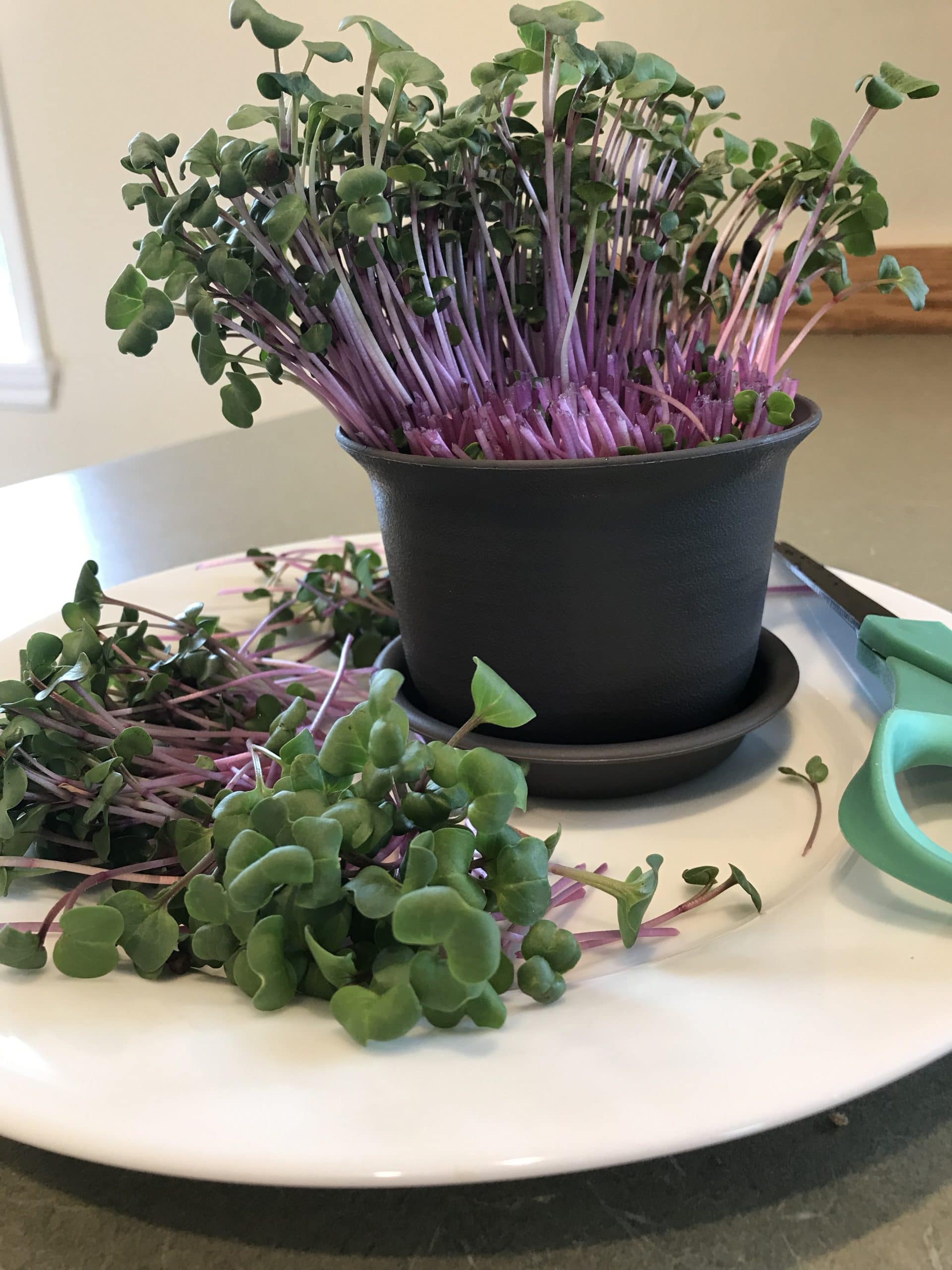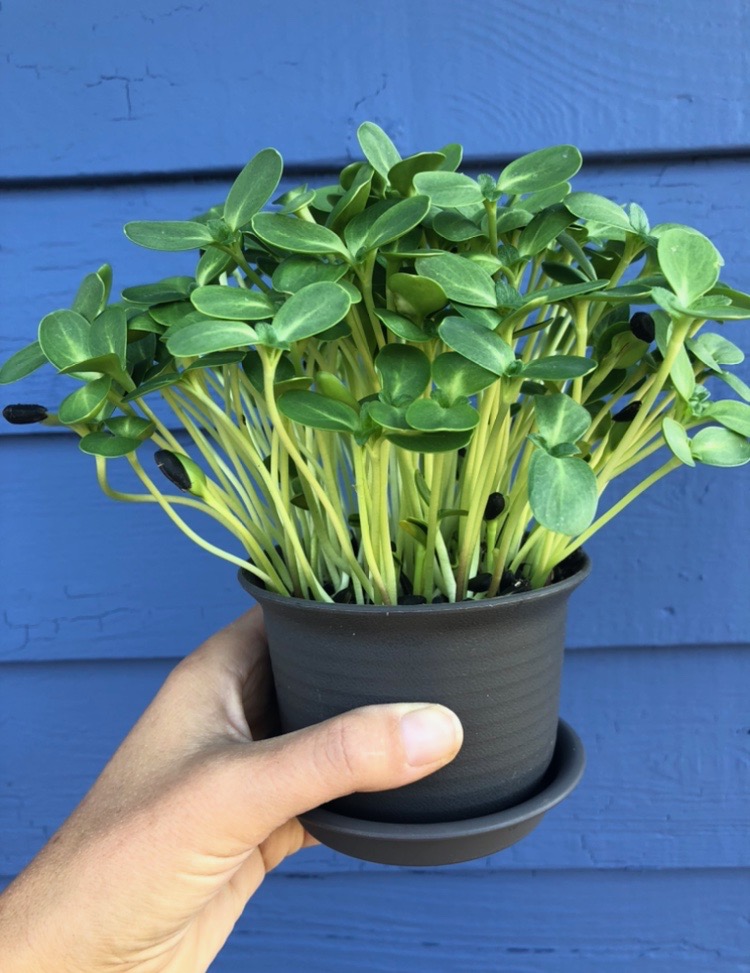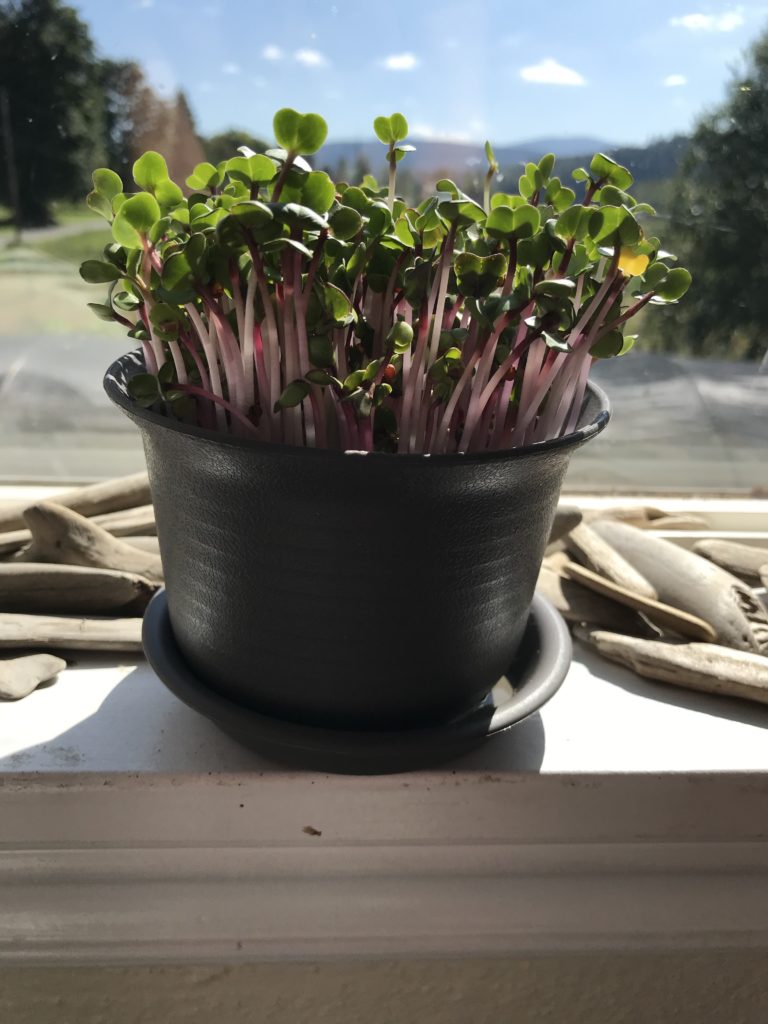Microgreens have long been a staple of culinary establishments. From natural food bars to the fine dining temples of the world, their unique flavors, textures, and colors inspire all senses.
As demand for microgreens rose, so did accessibility, moving beyond top kitchens and health food stores to local grocery store shelves and farmer’s markets everywhere. Plus, they’re easy to grow at home.
In just one to two weeks from germination, you can have your very own homegrown microgreens to add to your recipes.

Are Microgreens The Same As Sprouts?
Microgreens often get confused with sprouts, but they are a little different. Microgreens are ready to consume about two weeks after germination, while sprouts are significantly less mature.
At harvest time, microgreens are about three inches in height and include the plant’s first leaves. Sprouts are much less developed, usually taking under a week before they’re ready to eat.
Plus, sprouts are germinated in water, while microgreens are grown in soil. We eat the stems and leaves of microgreens, but seeds and stems are the edible parts of a sprout.
Both are delicious, although the plant’s true character and flavor profile does not reach its full potential as a sprout. It takes a little more time for the plant to develop its nutrient profile, and this is where the magic of microgreens really shines.

Healthier At Home
Face it – we’re all doing a lot more cooking at home these days, and it’s great to have such a powerfully healthy ingredient handy whenever we need a boost! Microgreens look great on your plate, pack a massive flavor punch, and they’re incredibly nutrient-dense.
But do you know all the health benefits of microgreens?
Microgreens Contain More Vitamins and Antioxidants Than Mature Vegetables
Scientific studies confirm that microgreens contain up to 40 times more nutrients than their fully-fledged counterparts.
These tiny powerhouses encapsulate all the benefits of the mature plant in a highly concentrated form. Depending on the species, they could contain higher levels of:
- Iron
- Zinc
- Magnesium
- Copper
- Polyphenols
- Antioxidants
- Vitamin C
- Calcium
- Vitamin A
- Folate
- Protein
- Fiber
- B Vitamins
- And more besides
Microgreens May Reduce Risk and Symptoms of Chronic Disease
We’ve long known that eating more fresh vegetables keeps us healthy and is linked to reducing chronic diseases.
Heart health, especially, is of great concern, as it is the leading cause of death in the United States. Most doctors and experts agree, modifying your diet to include fresh, nutrient-dense foods is one of the best ways to support a heart-healthy lifestyle.

Since microgreens deliver higher concentrations of beneficial antioxidants, vitamins, and minerals—without having to add a lot of extra food to your diet—they are a great way to support ongoing health.
Some of the chronic conditions microgreens can protect you from include:
- Heart Disease: polyphenols are a type of antioxidant linked to a decreased risk of heart disease, specifically because they can potentially lower inflammatory response and “bad” cholesterol (LDL) levels.
- Cancer: Consuming higher levels of polyphenols and antioxidants could reduce your risk of developing certain types of cancer.
- Diabetes: Research shows that antioxidants improved insulin response and sugar metabolization by up to 44 percent.
- Alzheimer’s Disease: increasing antioxidant intake could be linked to a reduced risk of Alzheimer’s disease.
Microgreens Are Good For People With Poor Kidney Function
If you have impaired kidney function, either from kidney disease, chemotherapy, or an inherited genetic trait, it’s generally recommended to avoid foods rich in potassium. Fresh vegetables tend to fall into this category, so they often get relegated to the “avoid” list.
However, microgreens contain much lower potassium levels, so anybody with poor kidney function can enjoy the health benefits of microgreens without worrying about increasing potassium intake.
Microgreens Are Sustainable
If you are interested in reducing your carbon footprint and decreasing dependence on non-local food sources, microgreens are a great way to accomplish these goals. They are super easy to grow at home, and no matter how tiny your living space might be, they don’t take up a lot of room on your kitchen counter or window sill.
You’ll get all the benefits of fresh-picked organic food without having to travel for it, reducing the burden on our global food supply.

Growing Microgreens is Easy – And Therapeutic
With all the uncertainty in the world today, we’re all looking for ways to destress, live more mindfully, and focus on the things that really matter.
Growing microgreens at home are a great way to do this, as it gives you something healthy to look forward to, complements your at-home culinary experience, and provides opportunities for Zen activity through cultivation, care, and harvesting of your microgreen crop.
Growing Microgreens Is A Way To Get Your Kids To Eat Healthier
Getting your kids to eat their vegetables isn’t always the easiest thing to do. But when you engage them in the process of growing their own food – we challenge you to stop them!
They might still turn up their nose at eating broccoli or salad, but they’ll take ownership of what they produce themselves.
Whether you put the microgreens on their sandwiches or let them gobble them up just-picked, you’ll be happy to know they’re getting the benefits of all those nutrients – and they’ll be pleased as punch that you’re not forcing them to eat so much broccoli!
Microgreens Are Good For Gut Health
Microgreens contain a high concentration of prebiotic fiber, stimulating the growth of beneficial microbes in your digestive tract. Gut health is linked to better immunity, healthy elimination, reduced risk of colorectal cancers, improved energy levels, and healthy weight maintenance.
Supercharge Every Meal With Microgreens
Beyond all the health benefits of microgreens, they are so versatile that you’ll never get bored.
They look fantastic, they taste great, and there is such an incredible range of flavor and textural profiles they make every meal an experience. Microgreens take your health—and your culinary prowess—to the next level.
Check out our FREE quick-start video guide to learn how you can start growing microgreens at home.
MEDICAL DISCLAIMER
This content is for informational and educational purposes only. It is not intended to provide medical advice or to take the place of such advice or treatment from a personal physician.


